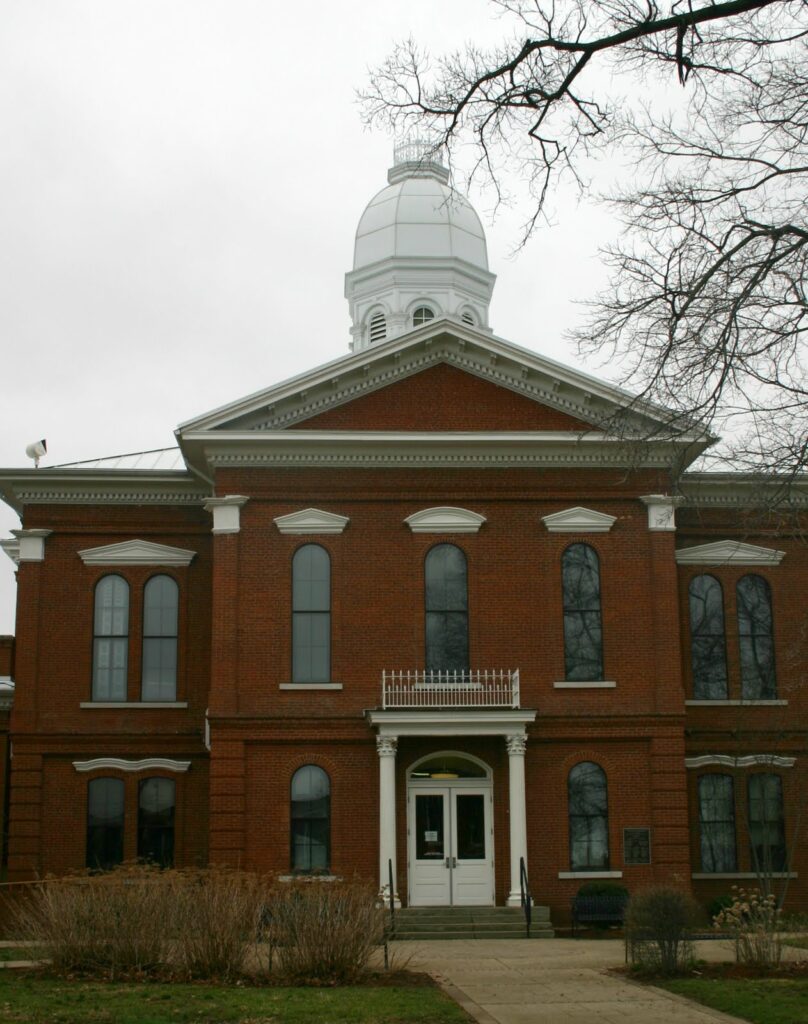 |
| The Old Courthouse in Westport is now Westport Methodist Church. |
Along the Ohio River in Oldham County lies Westport. Westport’s layout and design are very unique as it is designed around a large commons – a grassy area reminiscent of colonial New England. In fact, I imagine that walking through Williamsburg, Virginia pre-Rockefeller’s restoration was similar to walking through Westport. I am not the only person who has experienced this kind of feeling after experiencing Westport.
The streets, the buildings, and even the trees themselves seem to cling proudly to the importance that was theirs in the time of flourishing river traffic. For it was the river that gave birth and life itself to the town.
–from “Westport” by Helen Fairleigh Giltner, 1947 [Source: Courier-Journal]
Today, the historic structures are in various states of repair/disrepair, but the Friends of Westport are working tirelessly to restore this little hamlet. Their current project is the Westport Schoolhouse.
 |
| Westport Schoolhouse |
The Westport Schoolhouse, pictured at left, was erected in 1882 and is the only remaining one-room schoolhouse in the state that sits on a town square. The renovation, which is at risk due to state budgetary issues, would result in a community center for arts and education. [Source: WAVE3]
Baptist minister Elijah Craig, now of bourbon fame, received from Virginia a 300 acre land grant in 1780. His grant included Westport. When Oldham County was carved from Shelby County in 1823, this rivertown was named the county seat and served in that capacity until 1838 when the county seat was permanently moved to La Grange (with the exception of about a month in 1827 when La Grange was selected by voters as the county seat, but state officials soon thereafter returned Westport to the position of prominence under political pressure). When county governance left Westport for good in 1838, the courthouse (pictured at top of post) was deeded to the Baptist, Christian, Methodist and Presbyterian churches. The courthouse still stands today and is utilized by the town’s Methodist congregation.







